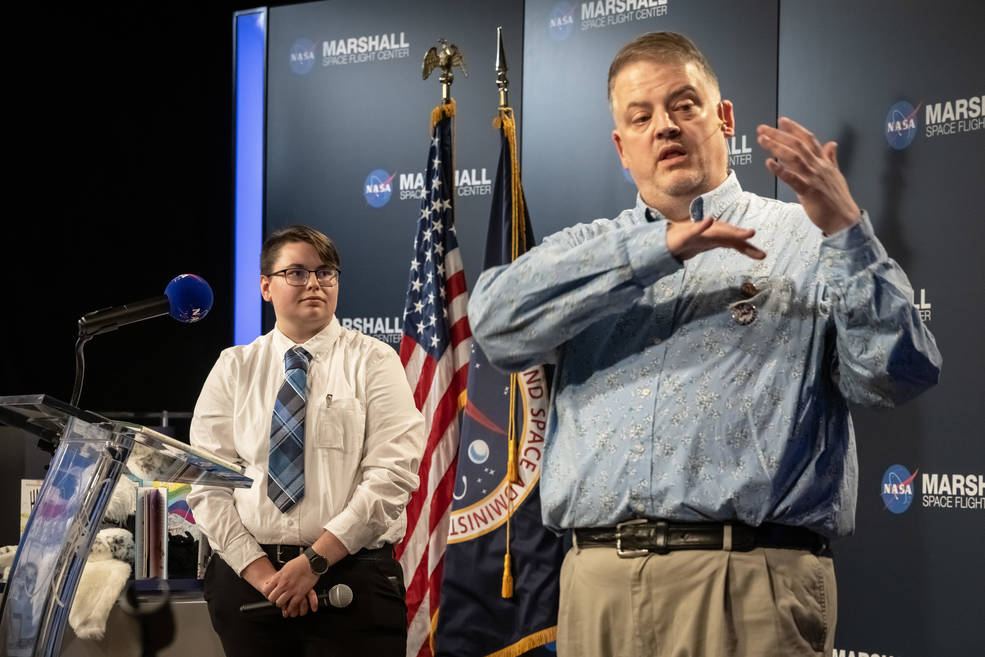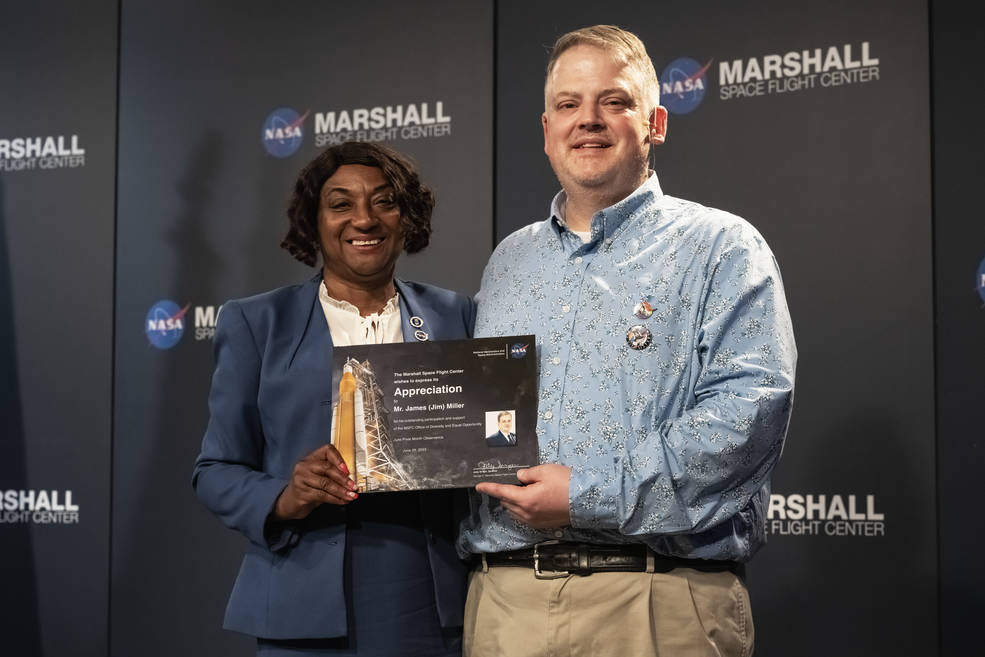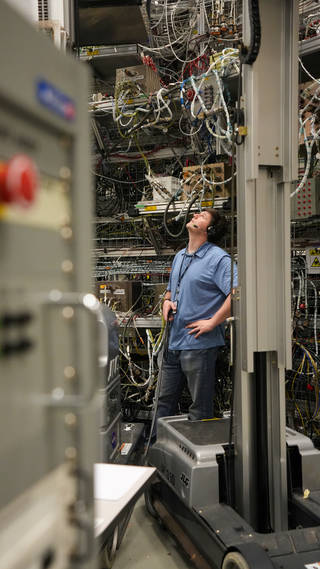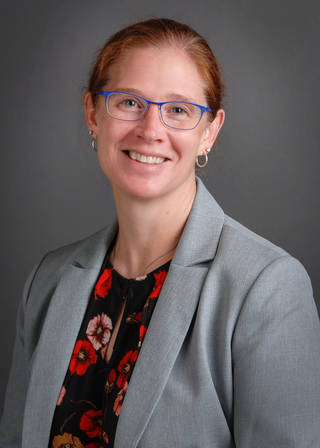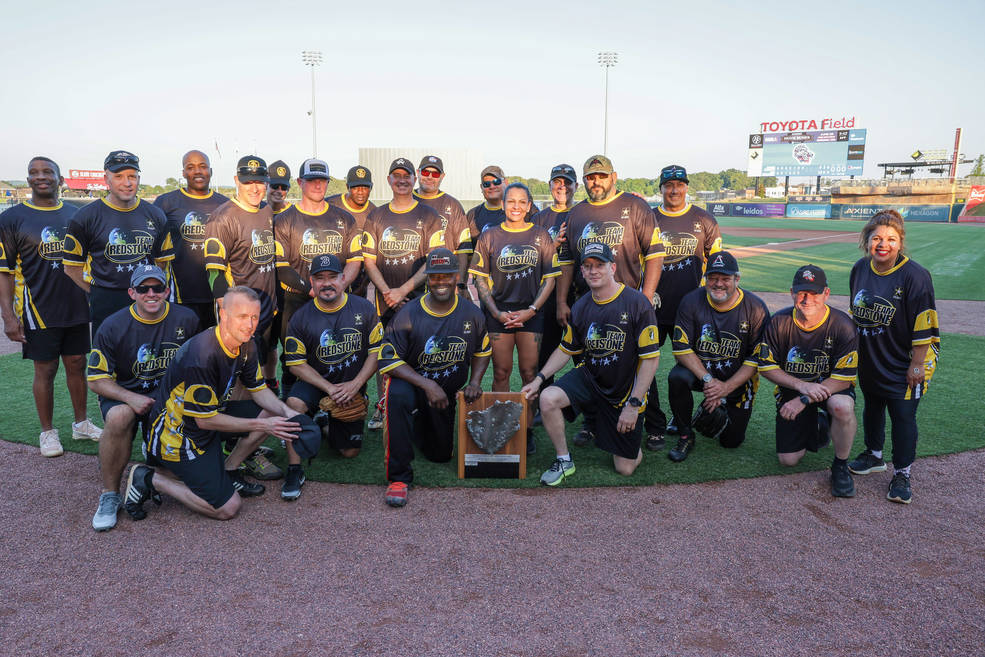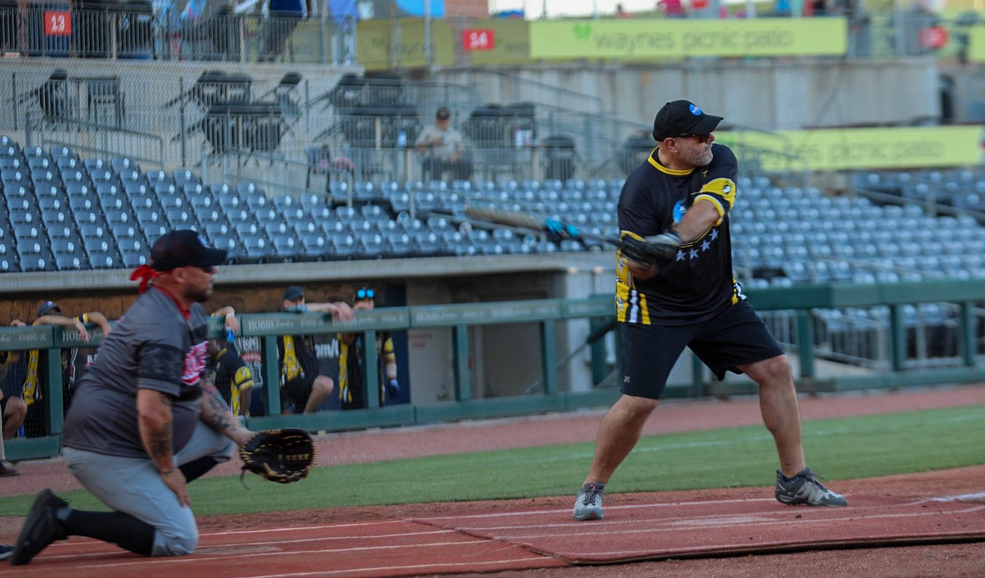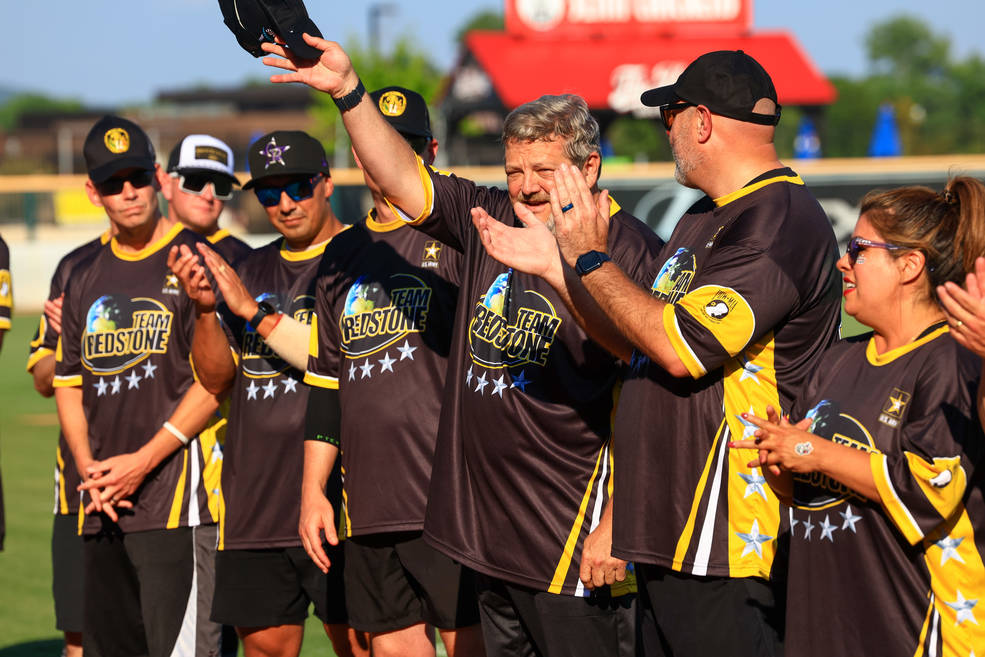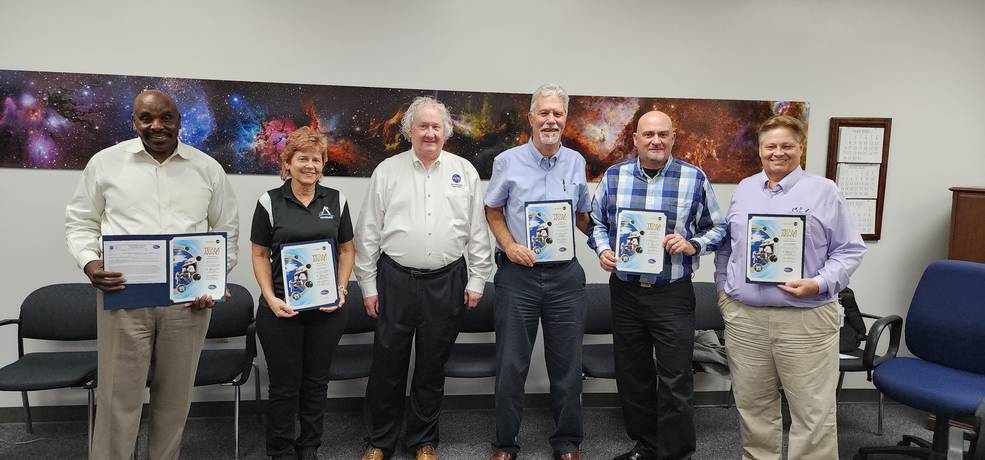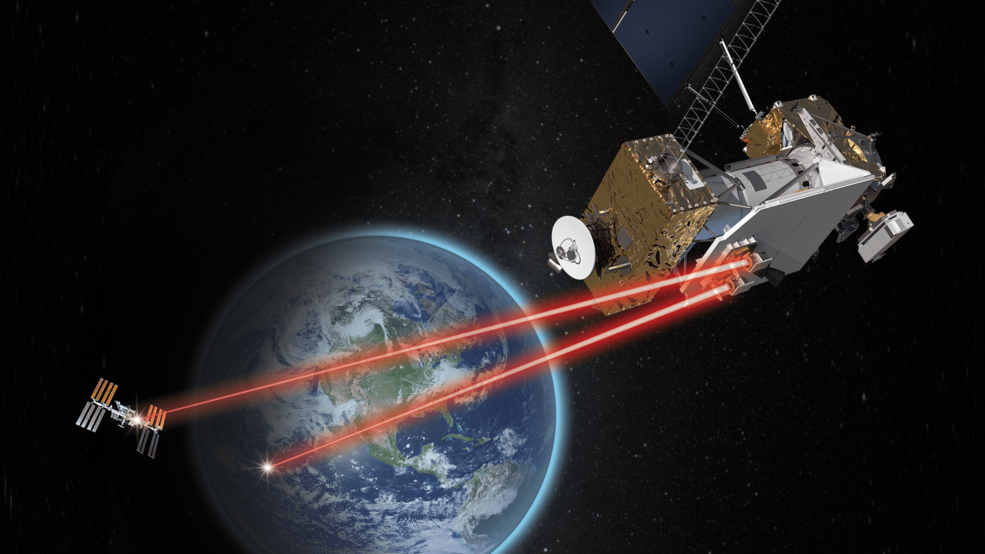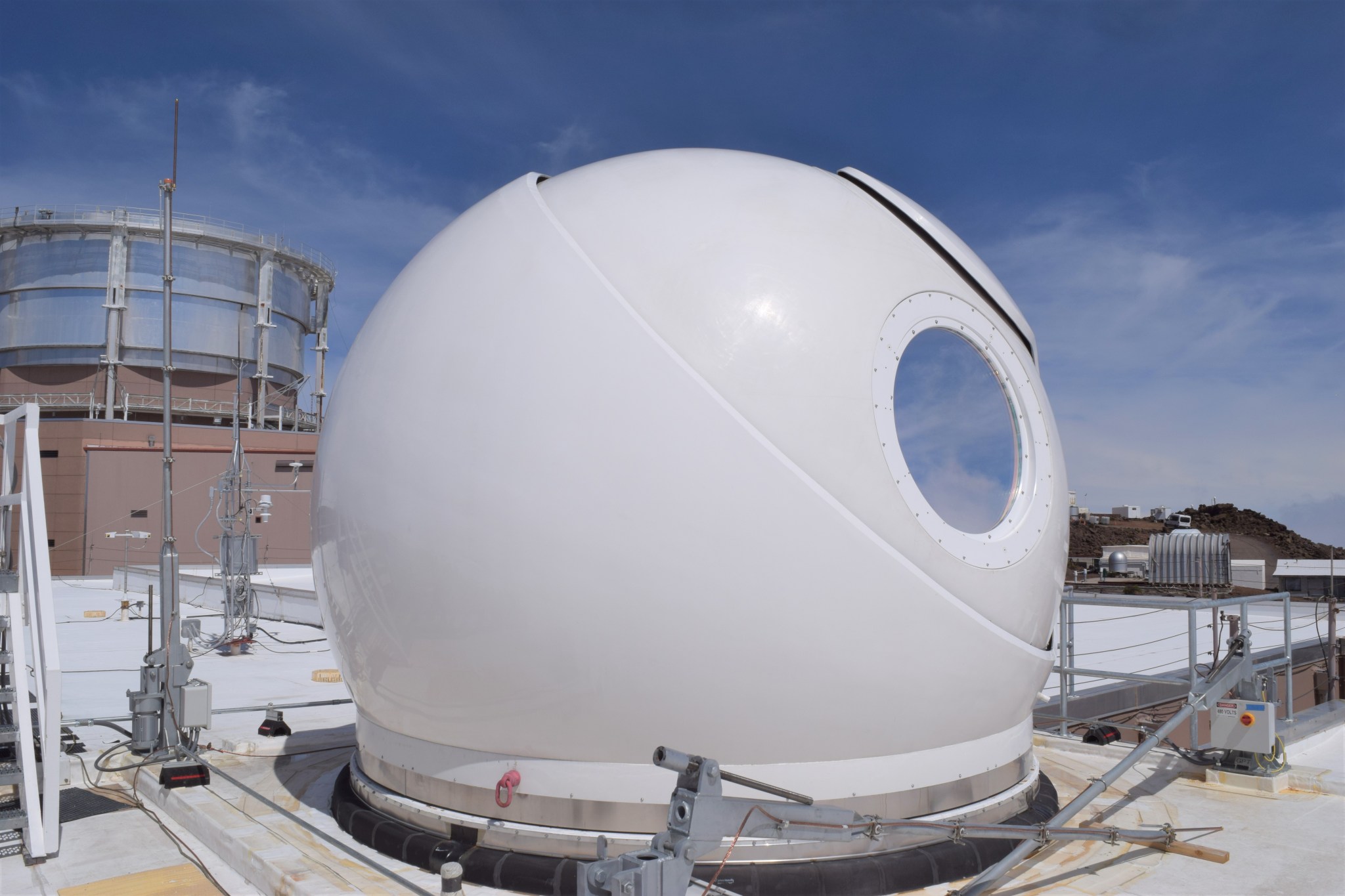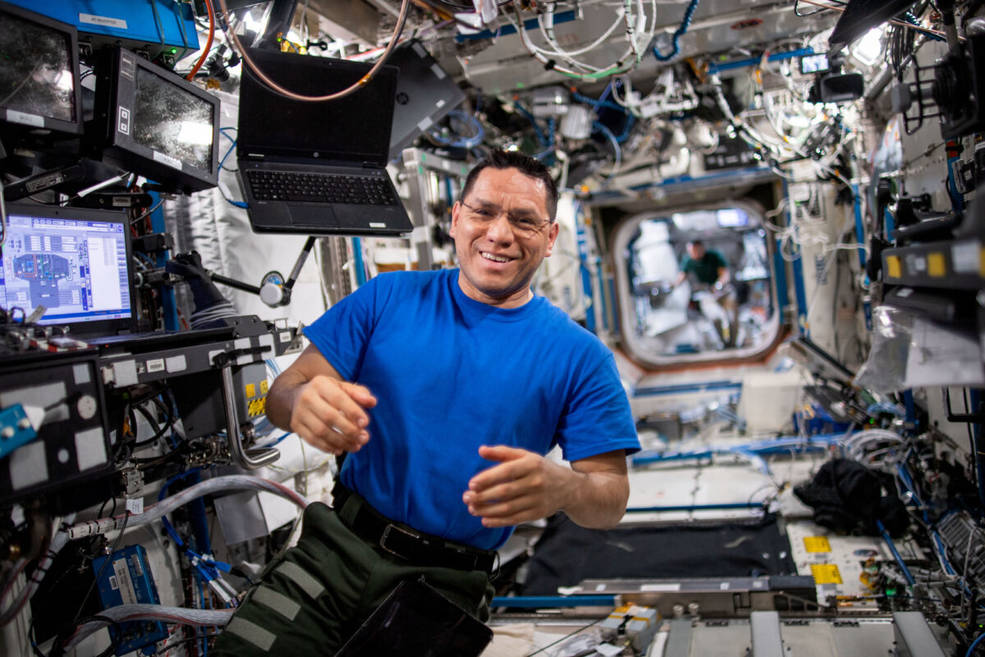The Marshall Star for July 5, 2023.
In This Week’s Star
- Keynote Speaker Talks Allyship, Education at Marshall LGBTQI+ Pride Event
- NASA Rocket Flight Software for Artemis II Meets Testing Checkpoint
- Nicole Pelfrey Named Cost Account Manager for Space Station Payload Operations, Manager Within HEDO Office
- Marshall Leaders Help Team Redstone Take Win in Community Softball Game
- Space Flight Awareness Award Recognizes SLS Team at Kennedy
- NASA’s Laser Communications Relay: A Year of Experimentation
- Webb Detection of Crucial Carbon Molecule Featured in ‘This Week at NASA’
- Crew Starts Week with Experiment Preps, Daily Exercise and System Maintenance
Keynote Speaker Talks Allyship, Education at Marshall LGBTQI+ Pride Event
Retired Math Teacher and STEAM (Science, Technology, Engineering, Art, and Math) advocate James “Madge” Miller, right, speaks with NASA’s Marshall Space Flight Center team members during the question-and-answer portion of an LGBTQI+ Pride event hosted June 29 by Marshall’s Out & Allied employee resource group, discussing some of his LGBTQI+ heroes. Miller also shared how he became an educator, how people can be better allies for marginalized communities, and the importance of support and inclusion at work and school. Joining him on stage is Elise Doan, a NASA Pathways intern and member of Out & Allied at Marshall. (NASA/Mick Speer)
Carolyn Magsby, left, deputy director of Marshall’s Office of Diversity and Equal Opportunity, presents Miller with a certificate of appreciation at the center’s Pride event.(NASA/Mick Speer)
NASA Rocket Flight Software for Artemis II Meets Testing Checkpoint
The first Artemis astronauts have begun crew training for their Artemis II mission around the Moon, and teams at NASA’s Marshall Space Flight Center are testing and configuring the flight software for the mega Moon rocket that will launch them on their journey.
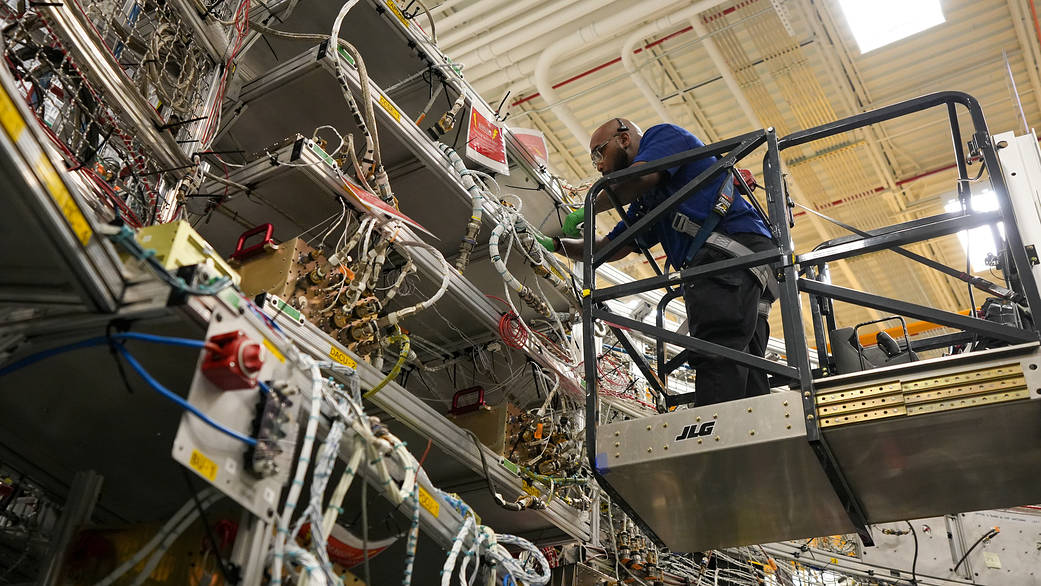
When NASA’s SLS (Space Launch System) launches NASA’s Artemis II crew aboard the Orion spacecraft, it will produce more than 8.8 million pounds of thrust. The SLS rocket’s flight software acts as the “brains” of the rocket, activating 48 hours prior to launch to command all that power and energy for the first eight minutes of the mission through the separation of its in-space propulsion stage. Inside the SLS Software Development Facility (SDF) at Marshall, software engineers recently completed the first part of formal qualification testing for the Artemis II SLS flight software.
The rocket’s flight software consists of approximately 50,000 lines of code. To test the SLS computer systems and flight software ahead of launch, a team inside the SDF simulates a series of normal and off-nominal SLS- rocket and environmental scenarios, called test cases. SLS flight software qualification testing includes multiple test procedures to verify software requirements. By the conclusion of the two-week test period on May 15, engineers had completed 179 test procedures with approximately 58,000 test cases. In comparison, the first phase of qualification testing for Artemis II completed in 2022 had 72 test procedures consisting of 9,500 test cases.
“The SLS flight software team integrated operational improvements and new test scenarios in preparation for Artemis II based on lessons learned from the successful launch of Artemis I in November 2022,” said Dan Mitchell, NASA’s lead SLS integrated avionics and software engineer. “The test facilities at Marshall Space Flight Center have the capability to produce thousands of test cases the SLS flight software is required to detect and respond to appropriately on launch day, offering us the opportunity to assess and certify all the major software elements and systems on the rocket before the first crew flies on SLS.”
The second and final phase of formal qualification testing for the SLS flight software in the SDF is set to begin in July. Beginning in the fall, engineers will begin integrated system testing in the SLS System Integration Lab (SIL) using the full suite of SLS avionics hardware and flight software. Together, the test results from the SIL system and the flight software SDF will provide teams key evidence to support mission readiness for Artemis II. By the time the SLS rocket launches Artemis II, flight software engineers will have “flown” the SLS mission more than 100,000 times within the various SLS avionics and software development and test facilities.
NASA is working to land the first woman and first person of color on the Moon under Artemis. SLS is part of NASA’s backbone for deep space exploration, along with the Orion spacecraft, advanced spacesuits and rovers, the Gateway in orbit around the Moon, and commercial human landing systems. SLS is the only rocket that can send Orion, astronauts, and supplies to the Moon in a single mission.
Nicole Pelfrey Named Cost Account Manager for Space Station Payload Operations, Manager Within HEDO Office
Nicole Pelfrey has been named to the Senior Executive Service position of International Space Station Payload Operations cost account manager, and manager, Payload and Mission Operations Division within the Human Exploration Development and Operations Office at NASA’s Marshall Space Flight Center.
Pelfrey brings with her 23 years of NASA and industry experience in scientific and space communities. Her experience and leadership will be critical to the HEDO Office as we to continue to operate groundbreaking research on the space station and prepare for science and exploration missions to Gateway, the lunar surface, and deep space.
Prior to her current assignment, she served in the Science and Technology Office as the deputy manager of the Science Research and Projects Division, a role she has held since 2021. Pelfrey served as Astrophysics Branch manager from May 2019 until June 2021, during which time she also performed a six-month detail as the deputy chief of the Exploration Technologies and Systems Development Division in 2021. She joined NASA in 2018 as the deputy manager of the Astrophysics Branch.
Before joining Marshall, Pelfrey served in increasingly responsible positions with industry partners. She supported space station payload operations for 12 years in a variety of roles, serving the last three years as the operations manager for the Mission Operations and Integration space station contract. Pelfrey previously was a flight controller, team lead, the operations engineer for the space station emerging technology development project, supported multiple technical contract proposal teams, developed training for multiple organizations, led the summer intern program, and supported the preliminary design review of the Sierra Nevada Dream Chaser spacecraft. She also served as the project manager for the space station payload Earth Knowledge Acquired by Middle School Students (EarthKAM) and led the 2016 NASA Small Business Mentor-Protégé Agreement of the Year, the first ever with a minority serving institution. During this time, she also completed project management training from UAH.
After beginning her career as a scientist in the pharmaceutical industry, Pelfrey joined the NASA team as a contractor in 2006 supporting the space station as a payloads communications manager (PAYCOM). She served as PAYCOM team lead for six years before shifting her focus to training and organizational management.
Her numerous honors include the agency’s NASA Mentor-Protégé Agreement of the Year and the center-level NASA Small Business Industry Mentor-Protégé Agreement of the Year, both in 2016; U.S. House of Representatives Certificate of Congressional Recognition and Marshall Space Flight Center Director’s Group Achievement Award, both in 2015; and Johnson Space Center Director’s Innovation Group Achievement Award and NASA Agency Group Achievement Award, both in 2013.
A native of Simpsonville, South Carolina, Pelfrey earned a bachelor’s degree in biology from Wofford College in Spartanburg, South Carolina.
She lives in Huntsville with her husband, Joseph, and daughter, Adelyn Reece.
Marshall Leaders Help Team Redstone Take Win in Community Softball Game
Team Redstone, which includes various representatives from tenant organizations on Redstone Arsenal, pose with their plaque after defeating the North Alabama Rockets, a team of Huntsville community leaders, 23-10 at the Armed Forces Celebration Week Redstone vs. Community Softball Game, held June 27 at Toyota Field in Huntsville. Joseph Pelfrey, deputy director of NASA’s Marshall Space Flight Center, and Robert Champion, director of center operations at Marshall, participated in the event. (Photo courtesy of Huntsville Sports Commission)
Pelfrey takes a turn at bat during the Armed Forces Celebration Week softball game June 27 at Toyota Field. (Army Materiel Command/Lindsay Grant)
Champion acknowledges his introduction as his teammates cheer him on during the Armed Forces Celebration Week softball game June 27 at Toyota Field. (Photo courtesy of Huntsville Sports Commission)
Space Flight Awareness Award Recognizes SLS Team at Kennedy
William Hill, third from left, safety and mission assurance director at NASA’s Marshall Space Flight Center, presents a Space Flight Awareness team award June 20 at the agency’s Kennedy Space Center. From left are, Winfred Verreen, Lisa Pantano, Hill, Daniel D’Agostino, Christopher Hill, and George Ferguson. The award recognized the SLS (Space Launch System) Systems Engineering and Integration Safety and Mission Assurance Resident Management Office team for sustained outstanding performance of SLS Artemis I flight hardware integration and operations. (NASA)
NASA’s Laser Communications Relay: A Year of Experimentation
NASA’s first two-way laser relay system completed its first year of experiments on June 28 – a milestone for a game-changing technology that could be the future for sending and receiving data from space.
The Laser Communications Relay Demonstration (LCRD) uses infrared light, or invisible lasers, to transmit and receive signals rather than radio wave systems conventionally used on spacecraft. Infrared light’s tight wavelengths allow space missions to pack significantly more data – 10 to 100 times more – into a single transmission. More data means more discoveries.
Now, at the halfway point in its experimentation phase, LCRD has shown laser communications’ significant advantages over traditional radio wave systems.
Located in geosynchronous orbit 22,000 miles above Earth, LCRD is currently acting as an experiment platform for NASA, other government agencies, academia, and commercial companies to test laser communications capabilities. After its experiment phase, there is an opportunity for the mission to become an operational relay. This would mean that future missions using laser communications would not need a clear line of sight to Earth and would simply send their data to LCRD, which would then beam it down to Earth.
LCRD, and laser communications in general, was born out of a need for more efficient data transmission to and from space. LCRD was launched to test and refine this technology through a partnership between NASA’s Space Communications and Navigation (SCaN) program and NASA’s Space Technology Mission Directorate.
“So far, we’ve published first papers about early findings from the experiments, but we plan to publish more lessons learned so that the aerospace industry can learn from this technology demonstration alongside NASA,” said Dave Israel, LCRD’s principal investigator at NASA’s Goddard Space Flight Center. “Early results have been outstanding, and seeing massive amounts of data come down in a fraction of the time is truly extraordinary.”
Some of these experiments include studying atmospheric impact on laser signals. While laser communications can normally provide increased data rates, humidity, clouds, heavy winds, and other atmospheric disturbances can disrupt laser signals as they enter Earth’s atmosphere.
“One of the things that surprised us was how weather affected experiment operations. We typically build our ground stations in remote, high-altitude locations with clear weather conditions – LCRD’s are in Hawaii and California,” said Rick Butler, LCRD experiments manager at Goddard. “The historic rain and snowfall in Southern California this year provided us an opportunity to really understand the impacts of weather on signal availability. This also reinforced our understanding that more ground stations mean more options for signal availability.”
Additionally, the weather experiment allowed engineers to enhance NASA’s adaptive optics systems, which are integrated into the ground stations and use a sensor to measure and correct distortion on the signal that’s coming down from the spacecraft.
Another experiment was conducted with the Aerospace Corporation, who built an LCRD-compatible terminal to send and receive data with LCRD. This experiment confirmed LCRD’s ability to work with external users.
Engineers also used LCRD as an opportunity to test networking capabilities like delay/disruption tolerant networking (DTN) over laser links. DTN empowers missions with unparalleled connectivity by storing and forwarding data at points along a network to ensure critical information reaches its destination.
Laser communications systems also can enable more precise navigation capabilities. An ongoing navigation experiment has shown engineers can receive more precise location data over a laser link than over standard radio waves. This means that the laser communications system can also serve as a platform for improved timing and location data — a critical part of GPS.
NASA is infusing laser communications technologies to provide missions with enhanced communications capabilities. Laser communications enable missions to send back more data in a single link. More data means more discoveries.Credits: NASA
“Technology demonstrations like LCRD allow NASA and its partners to implement new capabilities and test them in an operational scenario,” said Trudy Kortes, director of technology demonstrations in NASA’s Space Technology Mission Directorate at the agency’s headquarters in Washington. “This enables engineers to really get a feel for a technology’s potential and see what future applications could look like. It’s why testing operations in a relevant environment is so critical.”
With systems like LCRD proving the capabilities of laser communications, future science and human exploration missions that adopt the technology could be capable of transmitting more data back to Earth. As science missions’ instrumentation advances and gathers more data, the onboard communications systems must also evolve to transmit this data to researchers. Payloads like LCRD are showing how laser communications systems can benefit space missions and help them achieve their science objectives.
LCRD is one of a series of missions to demonstrate laser communications technology. The agency is continuing its infusion efforts with future terminals going on the International Space Station, the Artemis II Orion spacecraft that will travel around the Moon, and the Deep Space Optical Communications experiment aboard the Psyche spacecraft, which will test laser communications farther from Earth than ever before as Psyche makes its way to its asteroid destination in deep space.
With a year of successful experimentation completed, the LCRD team is now prepping for the late 2023 launch of NASA’s Integrated LCRD Low-Earth Orbit User Modem and Amplifier Terminal, or ILLUMA-T. Once on the space station, ILLUMA-T will send experiment data to LCRD, which will then relay it to the ground. This will allow NASA to test low Earth orbit to geosynchronous orbit laser communications and showcase the benefit of LCRD’s relay capabilities.
LCRD is a NASA payload aboard the Department of Defense’s Space Test Program Satellite-6 (STPSat-6). STPSat-6, part of the Space Test Program 3 (STP-3) mission, launched on a United Launch Alliance Atlas V 551 rocket from the Cape Canaveral Space Force Station. NASA is operating STPSat-6 for the Department of Defense.
LCRD is led by Goddard and in partnership with NASA’s Jet Propulsion Laboratory in Southern California and the MIT Lincoln Laboratory. LCRD is funded through NASA’s Technology Demonstration Missions program, part of the Space Technology Mission Directorate, and the Space Communications and Navigation (SCaN) program at NASA Headquarters. The Technology Demonstration Missions Program Office at NASA’s Marshall Space Flight Center is overseeing a portfolio of technology demonstration projects – both ground tests and flight tests – led by NASA centers and industry partners across the country.
Webb Detection of Crucial Carbon Molecule Featured in ‘This Week at NASA’
An international team of scientists has used NASA’s James Webb Space Telescope to detect a new carbon compound in space for the first time. The discovery is featured in “This Week @ NASA,” a weekly video program broadcast on NASA-TV and posted online.
The molecule, known as methyl cation, the molecule is important because it aids the formation of more complex carbon-based molecules. Carbon compounds form the foundations of all known life, and as such are particularly interesting to scientists working to understand both how life developed on Earth, and how it could potentially develop elsewhere in our universe.
Webb is an international program led by NASA with its partners, ESA (European Space Agency) and the Canadian Space Agency. Several NASA centers contributed to the project, including NASA’s Marshall Space Flight Center.
View this and previous episodes at “This Week @NASA” on NASA’s YouTube page.
Crew Starts Week with Experiment Preps, Daily Exercise and System Maintenance
After a weekend off-duty, the Expedition 69 crew kicked off their week July 3 with a variety of experiment preparations and system maintenance on the International Space Station.
NASA astronaut Stephen Bowen started his day removing HICARI-2 samples from the Gradient Heating Furnace in the Japanese Experiment Module, Kibo. Hicari is an experiment led by the Japan Aerospace Exploration Agency to investigate high-quality crystal growth of semiconductors.
While Bowen separated Hicari samples for return, NASA flight engineer Frank Rubio refreshed internal computer systems on the station. The two then took turns exercising on the station’s Cycle Ergometer with Vibration Isolation and Stabilization System bicycle and the Advanced Resistive Exercise Device (ARED), which is a machine that simulates free weights for resistive exercise to help astronauts maintain bone and muscle strength in microgravity.
Rubio ended his day setting up hardware for the crew to collect saliva samples. The samples will be monitored and stored for future analysis on Earth to better understand crew health in space. Following Rubio’s earlier computer refresh, Bowen ended his day stowing items and hardware after the refresh was completed.
NASA astronaut Woody Hoburg performed battery maintenance following his and Bowen’s spacewalk on June 15. United Arab Emirates flight engineer Sultan Alneyadi prepped and turned on Astrobee, which are free-flying robots aboard the station that are used to assist astronauts with their daily duties. He also spent time surveying the Unity and Harmony modules for future hardware relocation. Hoburg and Alneyadi then took turns exercising on ARED and the station’s treadmill.
Cosmonaut flight engineers Dmitri Petelin and Andrey Fedyaev worked in tandem to perform sampling of microflora while commander Sergey Prokopyev performed maintenance in the Zvezda service module.
The Payload Operations Integration Center, located at NASA’s Marshall Space Flight Center, consists of numerous team members who operate, plan, and coordinate the science experiments onboard the space station 365 days a year, 24 hours a day.
Learn more about the space station.

























